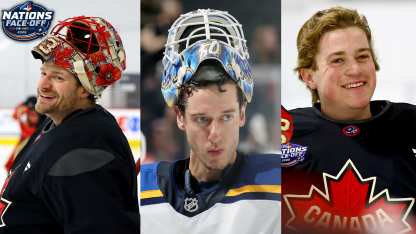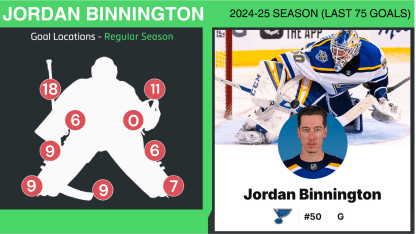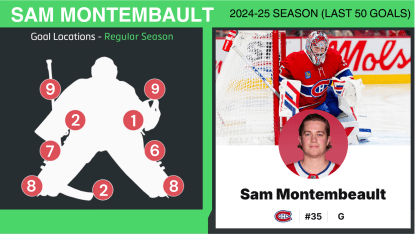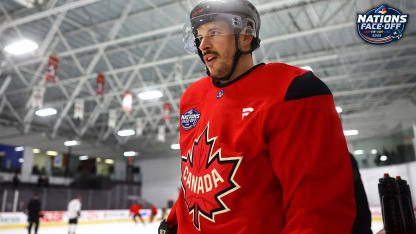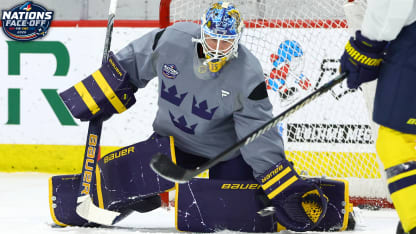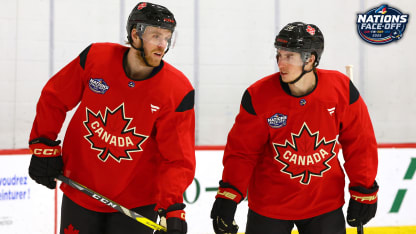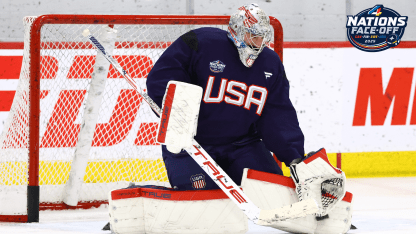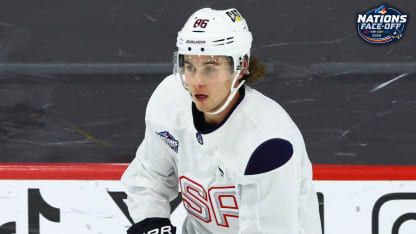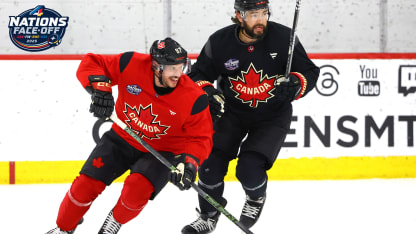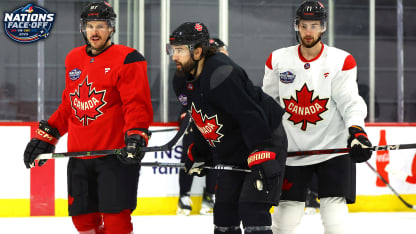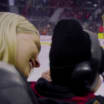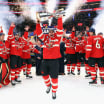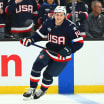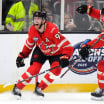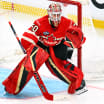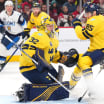East-west: Creating offense with passes and plays across the middle of the ice or slot line -- an imaginary line that splits the zone from the goal line to the top of the face-off circles -- has been an increasingly important part of creating offense for years, and Binnington has mostly handed it well. His 18 slot-line goals allowed (24 percent) are slightly higher than the 22 percent average for all goals tracked for this project, but there is a trend worth watching among them. Binnington tends to get outside his posts and squared up to plays on the perimeter along the board, increasing both the distance he has to travel and the amount of rotation required before making a good push, each of which makes it harder for him to get across in time when east-west passes connect.
… and fast too: That said, Binnington generates a lot of speed from his almost uniquely narrow stance, so you better not waste time after receiving one of those passes. One-timers and quick releases are a factor on 90.3 percent of his lateral goals against, and too much delay could give the hard-battling Binnington a chance to turn a sure goal into a momentum-changing save.
High blocker on clean looks: The 18 goals (24 percent) over Binnington’s blocker stand out not just because they are well above the 17.2 percent average, but also because they account for seven of the 10 goals he gave up on clean looks. On open looks from the other side, low glove may be a better bet because of the high, fingers up glove position that Binnington holds onto so patiently, often to the point where shooters fire the puck into his glove.
Dead angles and pop passes: This was a bigger issue during Binnington’s 2019 Stanley Cup run, when the goal totals on plays and passes from near or below the goal line were more than double his current total of 13 (17.3 percent). Binnington is great at not committing early to any specific post-play technique and will mix up which one he uses depending on the situation. Still, he can sometimes get caught in transition because he so often remains upright with the puck down low.
